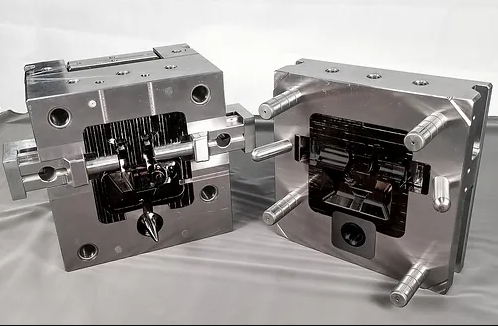Creating a die casting mold involves a detailed and intricate process that requires a high level of expertise and precision. In this article, we will explore the steps involved in creating a die casting mold, from design to production.
Step 1: Design
The first step in creating a die casting mold is to come up with a design. This design will serve as the blueprint for the mold and will include all the necessary dimensions, features, and specifications. The design will also take into account any specific requirements for the casting process, such as the type of metal used, the size of the casting, and any finishing or coating requirements.
Step 2: Tooling
Once the design is finalized, the next step is to create the tooling required to produce the mold. This tooling can consist of a range of different components, including dies, inserts, and ejector pins, and are typically made from tool steel. The tooling will be designed to fit together precisely and to withstand the high pressures and temperatures involved in the die casting process.
Step 3: Machining
With the tooling in place, the next step is to machine the mold. This involves cutting and shaping the steel into the required shape, using precision machining tools such as CNC mills and lathes. The mold must be machined to extremely tight tolerances to ensure that it fits together perfectly and produces accurate castings.
Step 4: Assembly
Once the mold has been machined, it must be assembled. This involves fitting together all the different components of the mold, including the dies, ejector pins, and inserts, and ensuring that they are all aligned correctly. The assembly process is critical, as any misalignment can result in defective castings.
Step 5: Testing
Before the mold can be used for production, it must undergo a series of tests to ensure that it is functioning correctly. These tests can include checking the mold for leaks, verifying that the ejector system is working correctly, and testing the mold at different temperatures and pressures to ensure that it can withstand the rigors of the casting process.
Step 6: Production
Once the mold has been tested and approved, it can be used for production. During the die casting process, molten metal is injected into the mold under high pressure, filling the cavities and creating the desired shape. The mold is then opened, and the finished casting is ejected.
Creating a die casting mold is a complex and demanding process that requires a great deal of expertise and precision. However, by following these steps, it is possible to create a mold that produces accurate, high-quality castings every time.

 0086-750-5616188
0086-750-5616188 +86 13392089688
+86 13392089688 sales@zhongmei-tech.com
sales@zhongmei-tech.com













